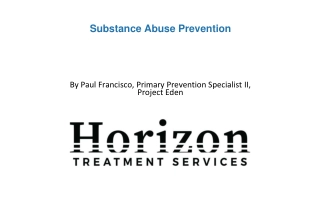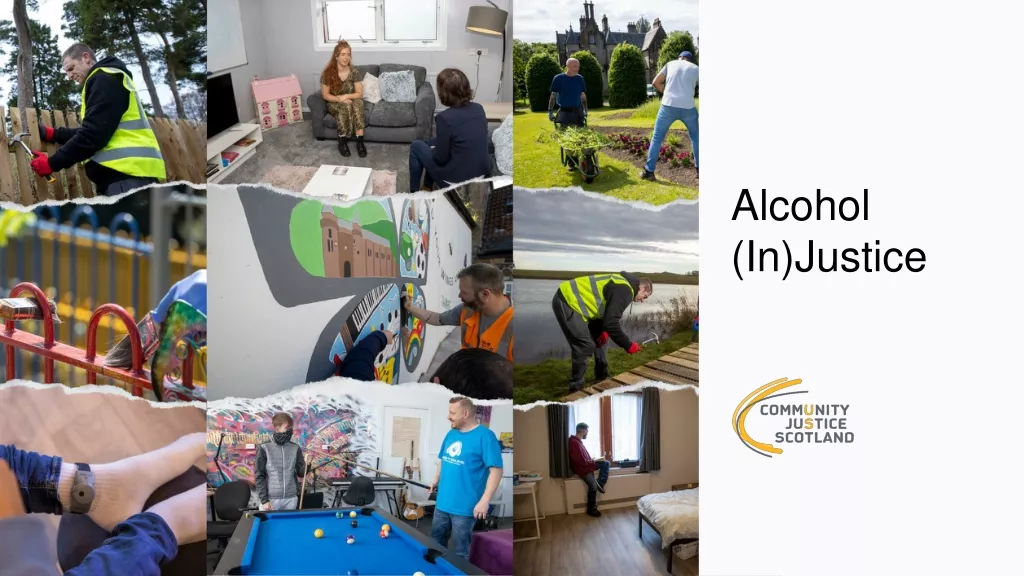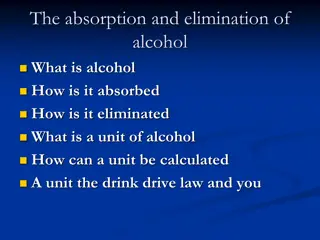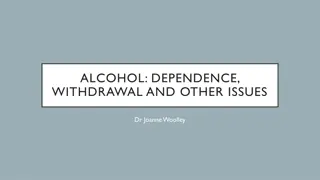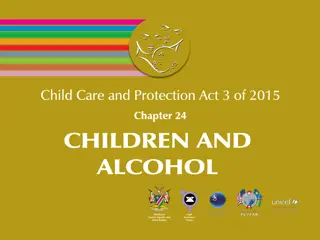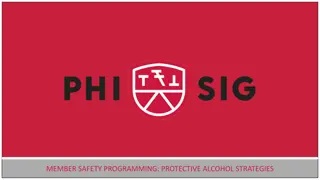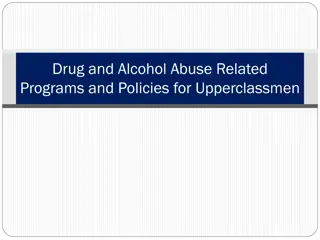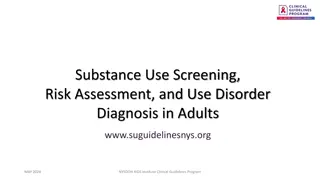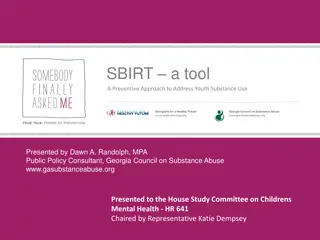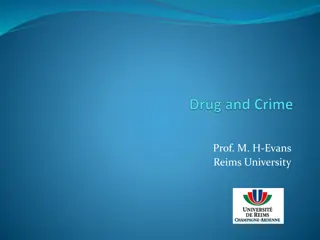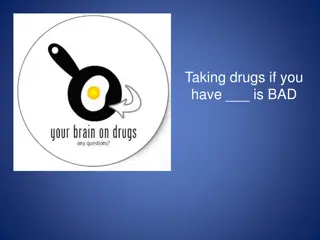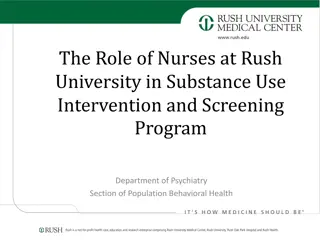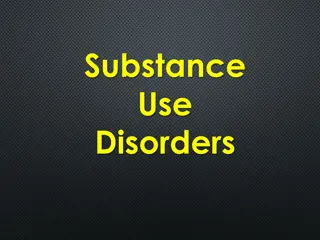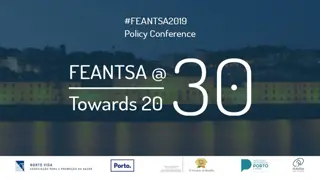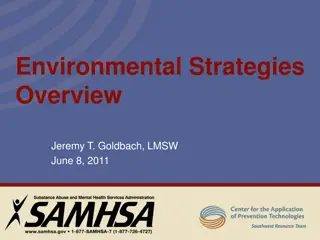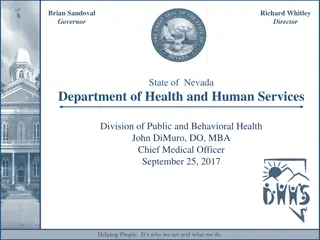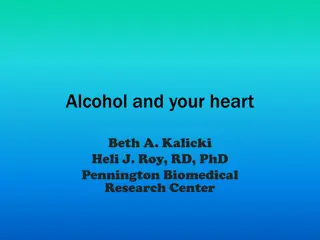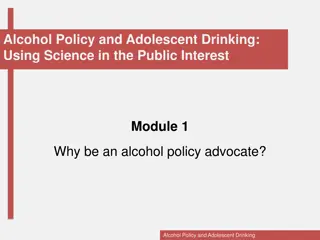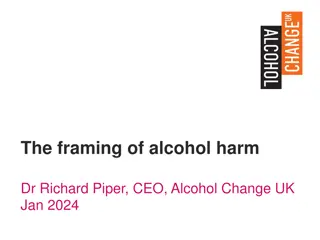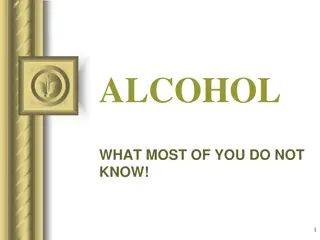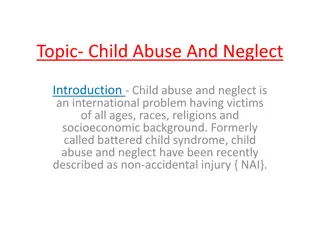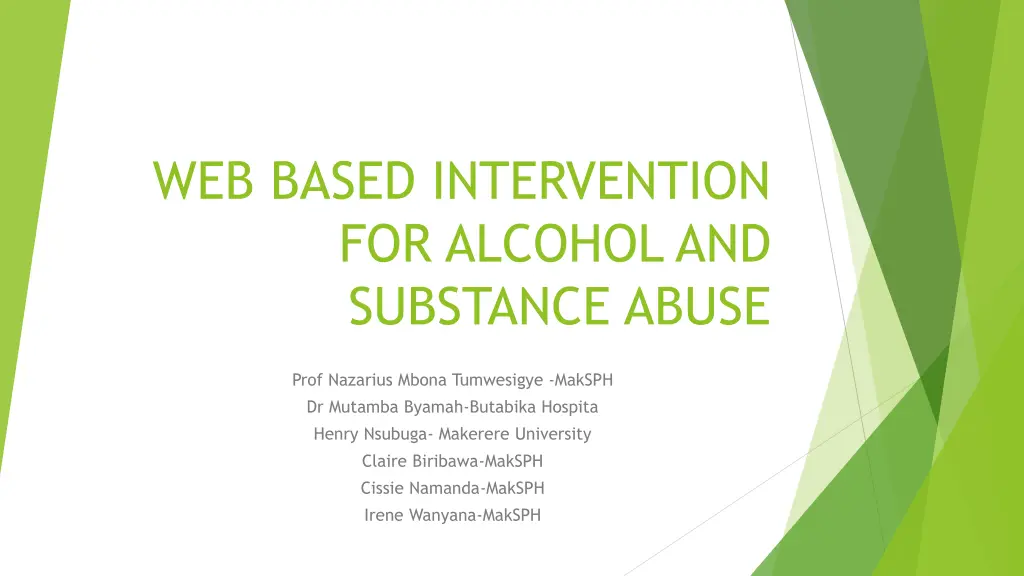
Web-Based Intervention for Alcohol and Substance Abuse Research Project
"Explore a research project focusing on web-based interventions for alcohol and substance abuse led by Prof. Nazarius Mbona Tumwesigye, Dr. Mutamba Byamah, Henry Nsubuga, Claire Biribawa, Cissie Namanda, and Irene Wanyana. The study addresses the growing public health concern of ASUDs, emphasizing the significance of prevention and treatment amidst challenges in accessibility to services. Learn about the proposed intervention targeting youth aged 18-24 in universities and the potential impact of utilizing web-based platforms for addressing substance abuse issues."
Download Presentation

Please find below an Image/Link to download the presentation.
The content on the website is provided AS IS for your information and personal use only. It may not be sold, licensed, or shared on other websites without obtaining consent from the author. If you encounter any issues during the download, it is possible that the publisher has removed the file from their server.
You are allowed to download the files provided on this website for personal or commercial use, subject to the condition that they are used lawfully. All files are the property of their respective owners.
The content on the website is provided AS IS for your information and personal use only. It may not be sold, licensed, or shared on other websites without obtaining consent from the author.
E N D
Presentation Transcript
WEB BASED INTERVENTION FOR ALCOHOL AND SUBSTANCE ABUSE Prof Nazarius Mbona Tumwesigye -MakSPH Dr Mutamba Byamah-Butabika Hospita Henry Nsubuga- Makerere University Claire Biribawa-MakSPH Cissie Namanda-MakSPH Irene Wanyana-MakSPH
Outline Introduction Methods Significance
Introduction Alcohol and other substance use disorders (ASUDs) are a growing public health concern- commitment to the problem under SDG3.0 SDG 3.0 says "Ensure healthy lives and promote well-being for all at all ages" and sub-goal 3.5 says by 2030 "Strengthen the prevention and treatment of substance abuse, including narcotic drug abuse and harmful use of alcohol". At national level the commitment is to reduce by 31% (NDP III) MOH recommended a national program targeting major risk factors (MOH, 2015) Evidence to inform appropriate action still insufficient The youth are among the populations most vulnerable to substance abuse since they are influenced by peer pressure and their nature to experiment[1]
Introduction contd A study carried out among students of 4 universities in Kampala in 2017 found that 29.5% smoked shisha[8] while another study published in 2018 found that 40% of the university students were engaged in alcohol abuse[9]. The accessibility to prevention and treatment services by young people in the country is low due to challenges ranging from human resource capital over infrastructural and logistic limitations to treatment and quality of care- related issues [12]. Interventions for ASUD in Uganda have mainly remained through traditional physical meetings with psychotherapists in often not-so-near location in a rented premised or government facility.
Introduction contd A review of 15 randomised trials for web-based interventions featuring personalized feedback on students patterns of alcohol consumption found out there was evidence to support the efficacy of very-brief, web-based interventions among college students for alcohol use reduction[19]. The study team proposes to assess the prevalence of substance abuse among the youths aged 18-24 in University, develop a web-based intervention for the prevention and treatment of ASUD and assess the feasibility and effectiveness of the intervention.
Problem statement Studies show web-based interventions are feasible and effective and provide privacy and anonymity to users[30] . In Uganda, despite widespread and growing availability of the internet and phone ownership especially among youth treatment modalities are mainly through physical psychotherapy sessions in rented premises or government facilities. The high phone density (64%, Clarke et al 2021) and internet access presents an opportunity for the implementation of web-based interventions that we have not utilised. A search carried out has not found similar intervention work in Uganda
Methods and material Design This will be a two-arm randomised controlled trial with a baseline assessment for eligibility and a three-month follow-up. It will have 1:1 allocation ratio for arms. One arm will be a web-based substance abuse intervention while another will be the standard care available at the institutions of the study participants. The study population will be students aged 18-24 in 3 largest private universities and 3 largest public universities The AUDIT[32] and DUDIT[33] tools will be used to screen for alcohol and illicit drug abuse respectively. Primary outcomes will be abstinence and reduction in frequency and amount of use of alcohol and drugs.
Methods contd-Inclusion and exclusion Inclusion Prevalence study: Any student aged 18 24 years at any level of education from the selected universities WEBSA intervention: Any person aged 18 24 years at any level of education from the selected universities with ASUD problem based on AUDIT score of 8 and above or DUDIT score of 6 and above Exclusion Prevalence study: Doesn t consent Websa Intervention: On treatment
Screening and intervention process Screening for eligibility Target-5000 Excluded- not Eligible/declined Baseline Assessment Randomisation Target-500 Intervention Target- 250 Control Target-250 Follow-up Follow-up Endline Endline
Intervention Secure login details for users to a Platform with user friendly reading materials against substance use and alcohol accessible through students phone web browsers or computers. i. A web-based messaging platform where users can reach out to counsellors in case the materials are difficult to understand. ii. Email reminders will be sent to all especially those who may not be using the shared material routinely. iii. Dashboard for the data manager who will remotely monitor material use by each of the individual users. iv. Participants with difficulty accessing or understanding the material will be advised to talk to the counsellors who will be online much of the day v. The counsellors will make weekly follow-ups to check on the progress. However, the application on the participants phones will be able to collect information on progress weekly. The counsellors The counsellors will follow-up on those whose details show queries on fidelity to the rules of intervention or will have failed to send the update on the progress. vi.
Key outcome variables Having ASUD Alcohol/drug dependence (more severe form of ASUD) Global Functioning (Mental, Physical and Social functioning) Quality of Life DUDIT/AUDIT score Experience of depression and ASUD related outcomes
Data analysis Alcohol and substance use practices will be compared between intervention and control areas at each of 3 follow-up stages- (monthly) following intention- to-treat mode-T-tests and chi-sq tests to be used Difference in difference multivariable analysis techniques will be applied to assess factors associated with the difference between intervention and control groups. There will be interim analyses at end of month 1 and month 2 before the final end line analysis. Other perspectives in analysis will be explored. These include using multilevel mixed effects models with an intention-to-treat aspect. We expect clustering by halls of residence and Universities and thus the importance of mixed effects analysis
Ethical considerations Informed consent Approvals-IRB and NCST confidentiality
References 1. Misuse in sub-Saharan Africa. 2021, Springer. p. 145-159. Manyanda, K., et al., Prevention of Substance Use among the Youth: A Public Health Priority, in Substance Use and 2. Adolescent Health, 2016. 59(4): p. S61-S75. Das, J.K., et al., Interventions for adolescent substance abuse: An overview of systematic reviews. Journal of 3. Nations, U., World drug report. United Nations publication, 2020. 4. Npa, Third National Development Pan 2020/21-2024/25, N. III, Editor. 2020, National Planning Authority: Kampala. 5. before and during early months of COVID-19 in Uganda. African Health Sciences, 2022. 22(2): p. 93-107. Tumwesigye, N.M., et al., Drugs and alcohol Use patterns among those seeking care in urban rehabilitation centres 6. fishing communities in Uganda. International journal of environmental research and public health, 2020. 17(7): p. 2401. Kuteesa, M.O., et al., Epidemiology of alcohol misuse and illicit drug use among young people aged 15 24 years in 7. Uganda: A cross sectional survey. International neuropsychiatric disease journal, 2016. 7(2): p. 25387. Abbo, C., et al., Alcohol, substance use and psychosocial competence of adolescents in selected secondary schools in 8. Tony, L., DETERMINANTS OF SHISHA SMOKING AMONG YOUTHS IN THE UNIVERSITIES IN KAMPALA UGANDA. 2017. 9. Selected Universities in Kampala Uganda. Victoria, O., et al., The Demographic and Socio-economic Factors Influencing Alcohol Abuse Among Students in 10. UGANDA, in Secondary PREVALENCE & RISK FACTORS FOR SUBSTANCE ABUSE AMONG UNIVERSITY STUDENTS IN KAMPALA, UGANDAVictoria University Uganda. 2018, Publisher. Oluwole, I., PREVALENCE & RISK FACTORS FOR SUBSTANCE ABUSE AMONG UNIVERSITY STUDENTS IN KAMPALA, 11. describing its effect on depression, anxiety, and risky sexual behavior. 2022. Kintu, T.M., et al., Alcohol use disorder among healthcare professional students: A structural equation model 12. Alcohol and Drug Research, 2017. 6(1): p. 27-35. Kalema, D., et al., Treatment challenges for alcohol service users in Kampala, Uganda. International Journal of
References contd 13. Uganda, in Secondary Towards effective, culturally adapted treatment programs for alcohol service users in UgandaGhent University. 2018, Publisher. Kalema, D., Towards effective, culturally adapted treatment programs for alcohol service users in 14. the UCLA Integrated Substance Abuse Program Conference, Istanbul, Turkey: UCLA Integrated Substance Abuse Programs. 2005. Kigozi, F. Building service delivery systems for substance abuse treatment. in Paper presentation at 15. alcohol abusers. Addiction, 2009. 104(12): p. 2023-2032. Cunningham, J.A., et al., A randomized controlled trial of an internet based intervention for 16. review of controlled trials. CIN: Computers, Informatics, Nursing, 2004. 22(1): p. 8-18. Kirsch, S.E.D. and F.M. Lewis, Using the World Wide Web in health-related intervention research: a 17. Addiction, 2017. 112(9): p. 1521-1532. Boumparis, N., et al., Internet interventions for adult illicit substance users: a meta analysis. 18. alcohol and substance use disorders. Focus, 2018. 16(4): p. 376-383. Watkins, L.E. and K. Sprang, An overview of Internet-and smartphone-delivered interventions for Clarke, R., & Tukundane, C. (2021). Mobility justice: working through cross-disciplinary perspectives on technology and refugee youth in Uganda during a pandemic. Interactions, 28(2), 28-33.

